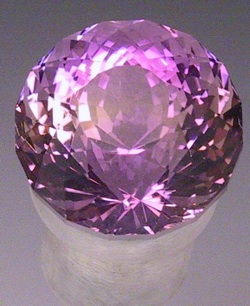What’s the difference between a synthetic, a genuine, and an imitation Gemstone?
What a great question to be asked! Also, one that is hard to answer without confusing the guest. I can remember my first discussion on this when I began in the jewelry industry and I remember thinking that it simply did not make much sense. It took a few more times discussing the terms and asking many, many questions before I fully understood it, so I can relate to those struggling with these concepts.
Here it goes, I am going to try to make this as simple and easy to understand by first defining, then giving examples of how the terms are used. Read along remembering one thing: Do not lock any gemstone into one definition…2 or 3 may apply to it. Keep that in mind and it should be a little easier to follow.
What exactly is a genuine (natural) gemstone?
This is the easiest of the definitions. Simply put: A genuine gemstone is one that was produced in the earth through natural processes. Mankind may treat them to enhance their beauty, but had no hand in creating them. They are mined from the earth and are rare, some extremely so. Their value in most cases will exceed the value of any gems created by man, though there are some exceptions to this. You know these gems already. They encompass all of the birthstones as well as many other popular gemstones present in jewelry. Price is impacted by the rarity of the gemstone.
Example: Diamond is a naturally occurring, genuine gemstone. It can sometimes be treated with heat, radiation, pressure, or a combination of some of the methods. This changes their color to white, blue, teal, green, pink, black, yellow, and brown. This does not change its definition. They are still genuine, as they are mined from the earth. They are described correctly as a natural diamond when untreated and a natural treated diamond when they have been altered by man.
What is a synthetic gemstone?
A synthetic gemstone is one that is grown in a laboratory under controlled conditions by man. The gem will share almost all the optical and chemical properties of the genuine gem. The cost will usually be significantly less than the genuine and larger gems do not increase in price as rapidly as the genuine gemstones do, so you can get a much larger gem for your money. These gems are priced on production cost. Rarity is not a consideration in pricing. Some natural gems that are available as synthetic: Moissanite, Diamond, Emerald, Ruby, Sapphire, Cubic Zirconia, and Alexandrite.
Example: Chatham Emerald is grown in a laboratory under controlled pressure and temperature. When completed, the gem IS an emerald and has most of the attributes, color and wear limitations that the natural gem has. Because it is grown in a lab, it must be referred to as synthetic.
What is an imitation and/or simulant?
An imitation or simulant is a gem that mimics the color and sometimes the light performance of a natural gemstone. It does not have to have gem properties, but it can. This sounds confusing because most people try to make simulants/imitations a separate category from natural and genuine. The better way to look at them, however, is as an additional description. Below are some examples of how simulant/imitation can be used in a description. You will note the descriptions can and sometimes do contain synthetic and genuine as well.
Example One: A Cubic Zirconia is a man-made gemstone and would be called a synthetic. It is also a diamond simulant because it looks like a diamond.
Example Two: In the past, colored glass was set into rings to make rings more affordable. Since these only mimicked the color of the stone they replaced, they are properly referred to as imitations or simulants.
Example Three: Rhodalite Garnet is a natural gemstone, but is sometimes used to replace Alexandrite in jewelry. When it is used in this manner, it is a simulant for Alexandrite.
In summary, if you separate the terms it becomes easier to understand what a jeweler is talking about when discussing types of gemstones. Hopefully, this article helps remove some of the confusion for our guests.
